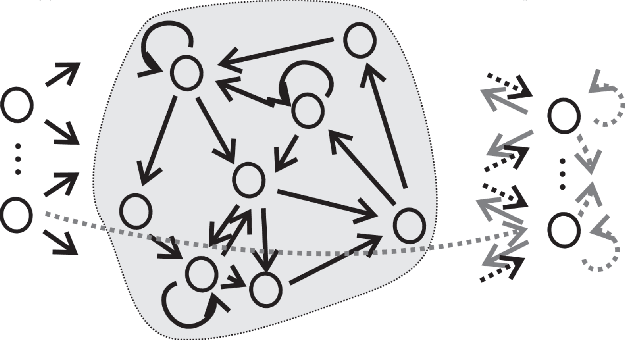Imposing Connectome-Derived Topology on an Echo State Network
Paper and Code
Jan 23, 2022



Can connectome-derived constraints inform computation? In this paper we investigate the contribution of a fruit fly connectome's topology on the performance of an Echo State Network (ESN) -- a subset of Reservoir Computing which is state of the art in chaotic time series prediction. Specifically, we replace the reservoir layer of a classical ESN -- normally a fixed, random graph represented as a 2-d matrix -- with a particular (female) fruit fly connectome-derived connectivity matrix. We refer to this experimental class of models (with connectome-derived reservoirs) as "Fruit Fly ESNs" (FFESNs). We train and validate the FFESN on a chaotic time series prediction task; here we consider four sets of trials with different training input sizes (small, large) and train-validate splits (two variants). We compare the validation performance (Mean-Squared Error) of all of the best FFESN models to a class of control model ESNs (simply referred to as "ESNs"). Overall, for all four sets of trials we find that the FFESN either significantly outperforms (and has lower variance than) the ESN; or simply has lower variance than the ESN.
 Add to Chrome
Add to Chrome Add to Firefox
Add to Firefox Add to Edge
Add to Edge